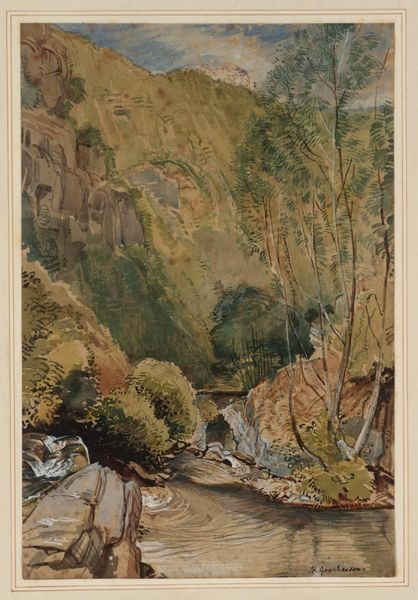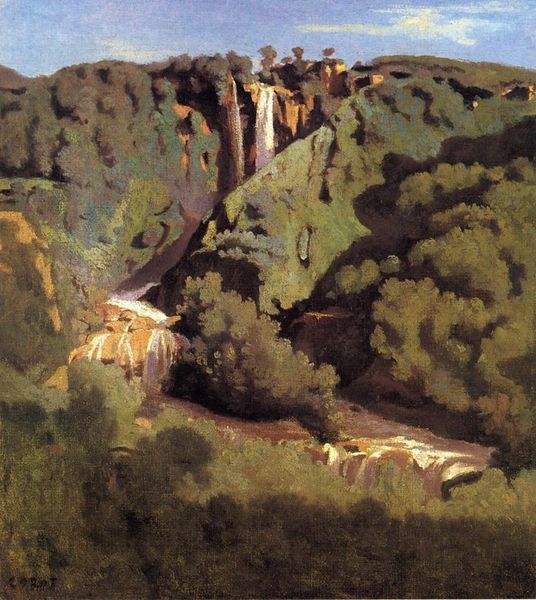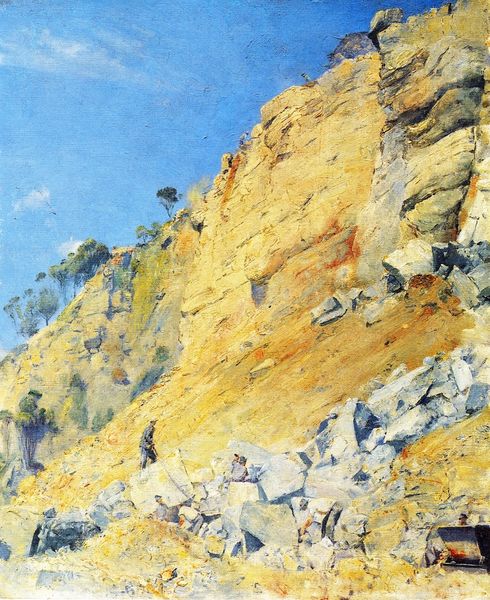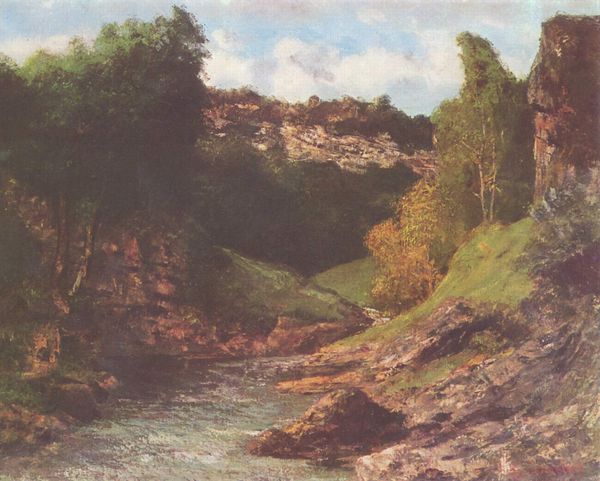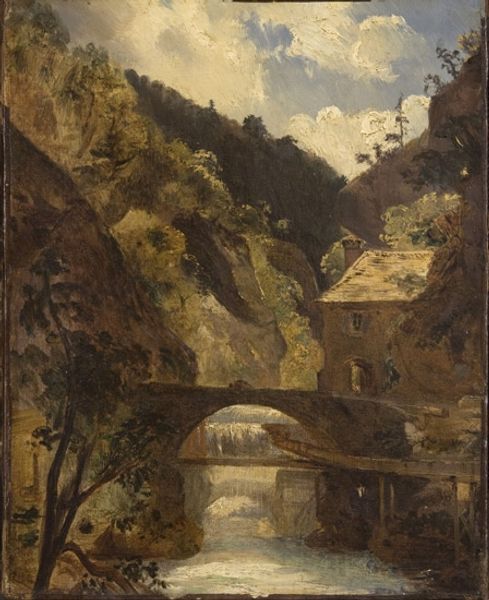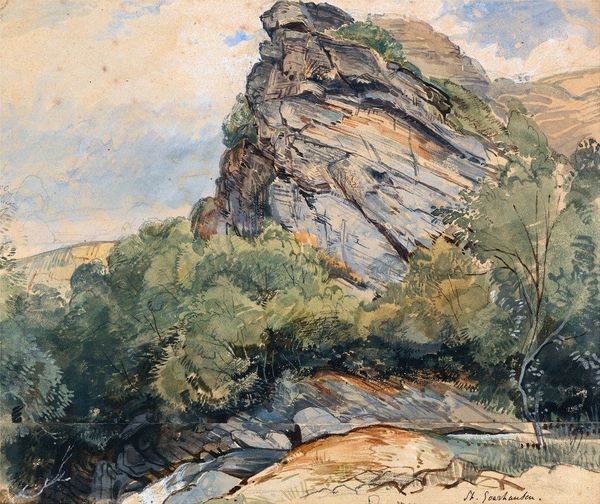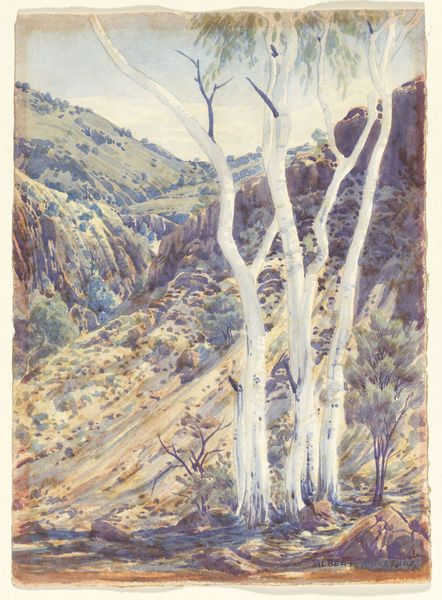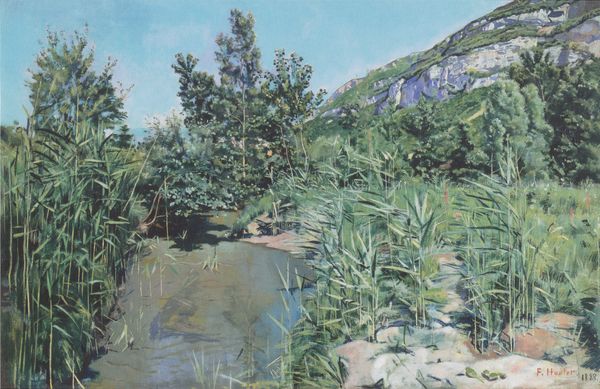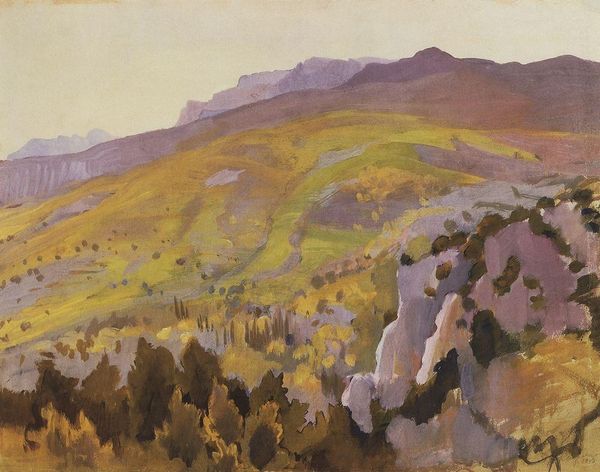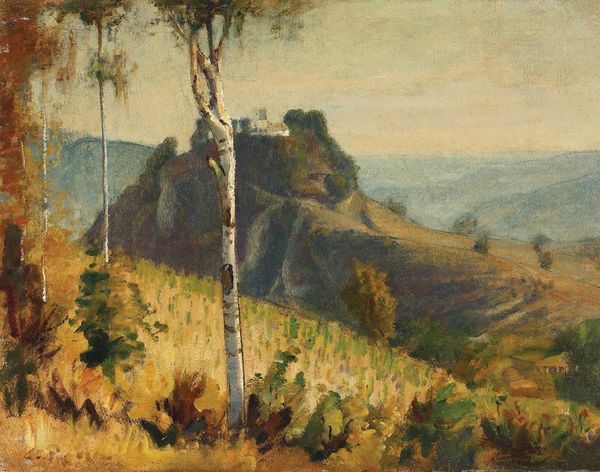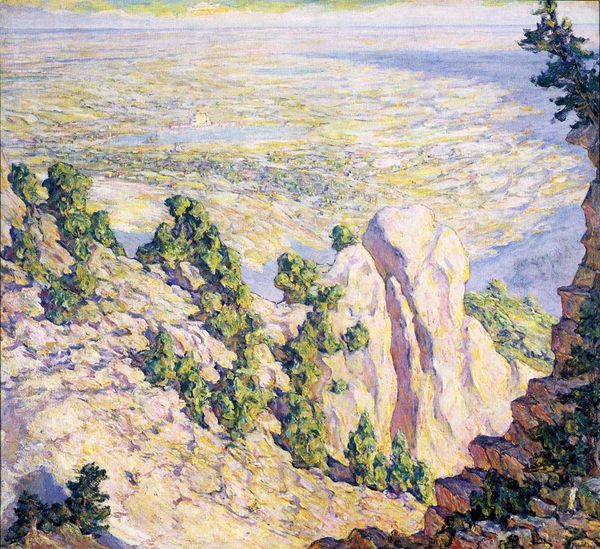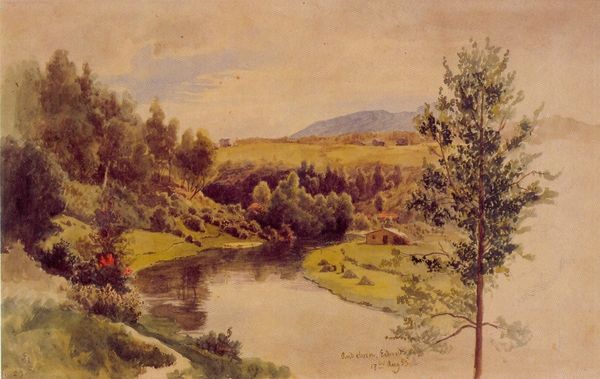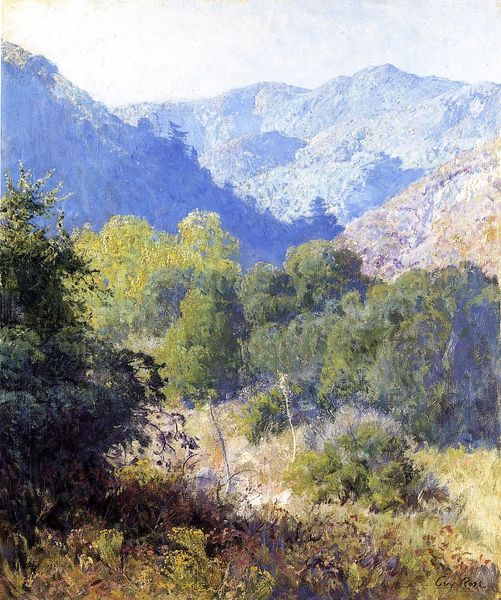
painting, plein-air, oil-paint, watercolor
#
tree
#
painting
#
plein-air
#
oil-paint
#
landscape
#
oil painting
#
watercolor
#
forest
#
mountain
#
post-impressionism
#
naturalism
#
watercolor
Dimensions: 71.5 x 52.5 cm
Copyright: Public domain
Curator: Let's discuss Ferdinand Hodler's "At the Foot of the Petit Saleve," painted around 1890. What are your first impressions? Editor: I'm immediately drawn to the way the light falls across the landscape. There's a distinct layering of color and form, almost a geometric division, particularly in the rendering of the mountain. It’s… structured. Curator: Indeed. Hodler, while embracing elements of naturalism and plein-air painting, was deeply interested in capturing what he called "parallelism," the recurring patterns he observed in nature that spoke to a deeper social and philosophical order. The mountain, for instance, wasn’t just a mountain; it represented stability and permanence in the face of societal upheaval. Editor: So, the layering, that division of color, isn't merely a stylistic choice but also symbolic? The horizontal bands of the fields versus the verticality of the trees could reflect Hodler's view of social structures. Curator: Exactly! The choice of palette, though seemingly naturalistic, could be interpreted through a social lens. Note how the subdued earth tones representing the ground connect it more strongly to notions of labor, as opposed to the brighter and cooler colors of the mountain. The social hierarchy is visible. Editor: I still see an undeniable emphasis on composition, irrespective of societal metaphor. Consider the diagonal thrust of the mountain countered by the reflective plane of the water—it's a sophisticated handling of pictorial space. Also, consider how the oil paint, the materiality itself, gives way for textures to emerge—especially if we understand post-impressionism as building from earlier stylistic concerns. Curator: And wouldn't you say this understanding, rooted in a very particular place and time, helps ground Hodler in his lived experience and provides context? Hodler’s vision reflects the rapidly industrializing Switzerland of the late 19th century, capturing not only the visual but the emotional landscape of that period, especially anxieties about nature, progress, and cultural identity. The seemingly benign scene carries undertones of profound societal change. Editor: That context enriches the viewing experience but for me, it doesn’t supplant the pure visual and philosophical power in the composition and structural handling of natural forms. Ultimately it adds a layer of nuance that deepens the visuality of it all, a semiotic consideration in a very strict, linguistic sense. Curator: I agree. His personal response to sociopolitical pressures undeniably informed his artistic practice. Hopefully, that approach has allowed us a new, and perhaps deeper reading. Editor: Indeed, an enriching dialogue. The materiality and the social context provide powerful insight here, regardless of our differences in approach.
Comments
No comments
Be the first to comment and join the conversation on the ultimate creative platform.
